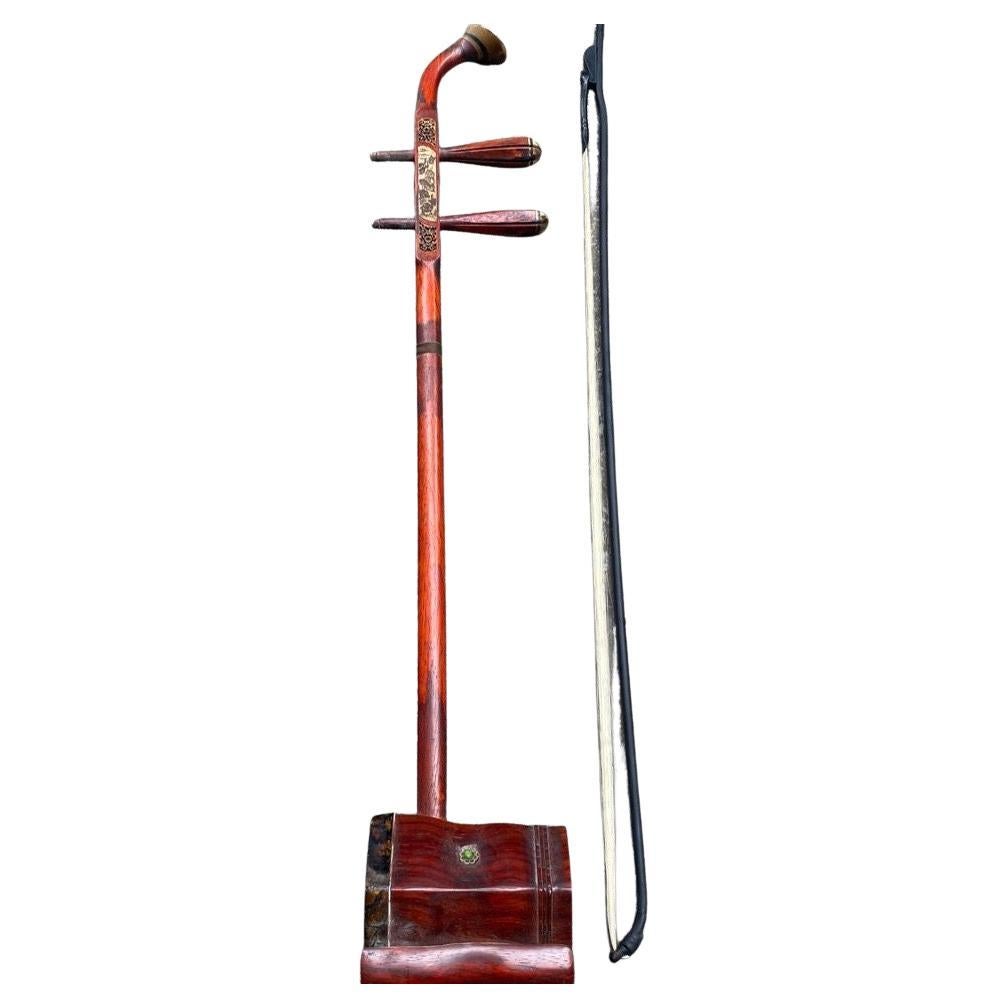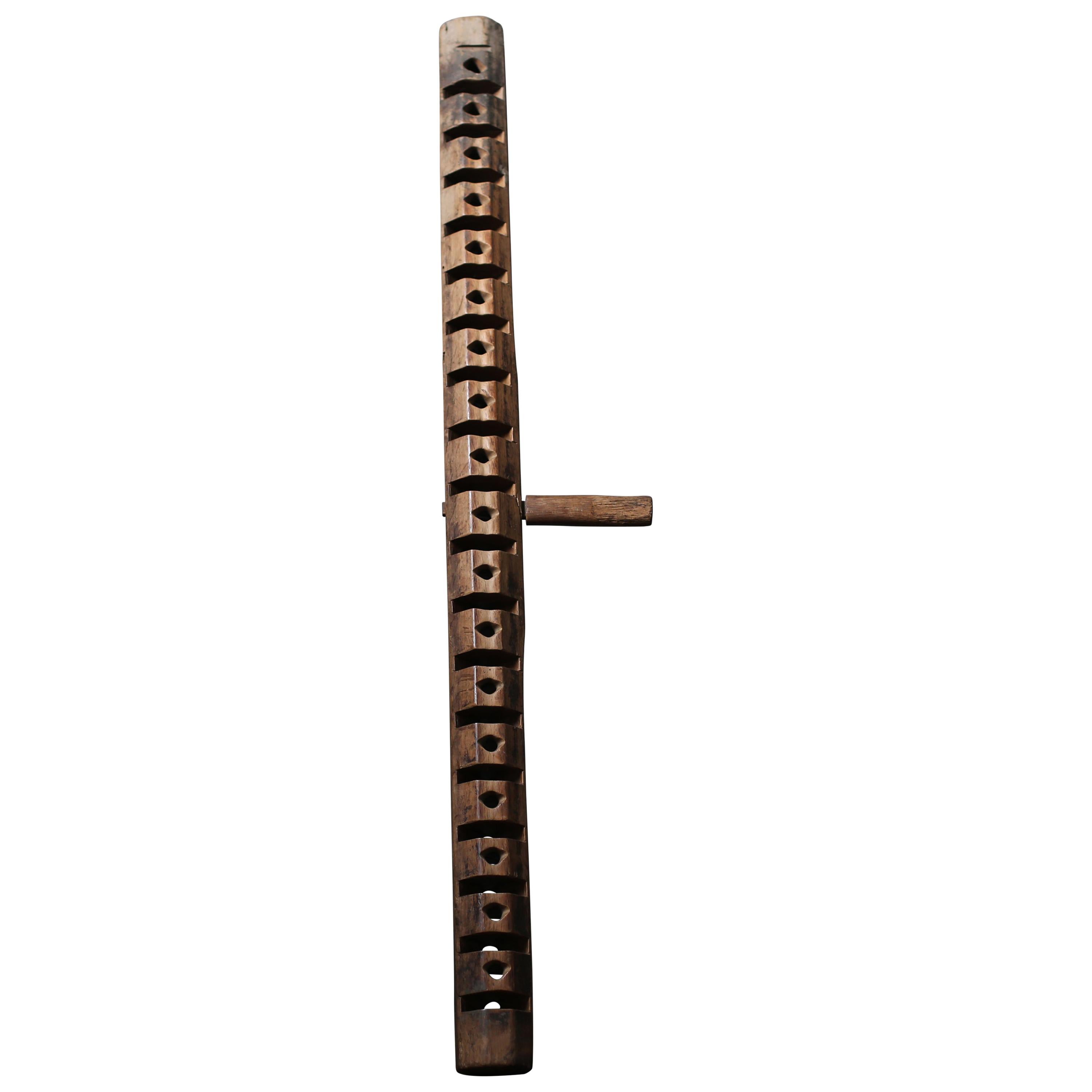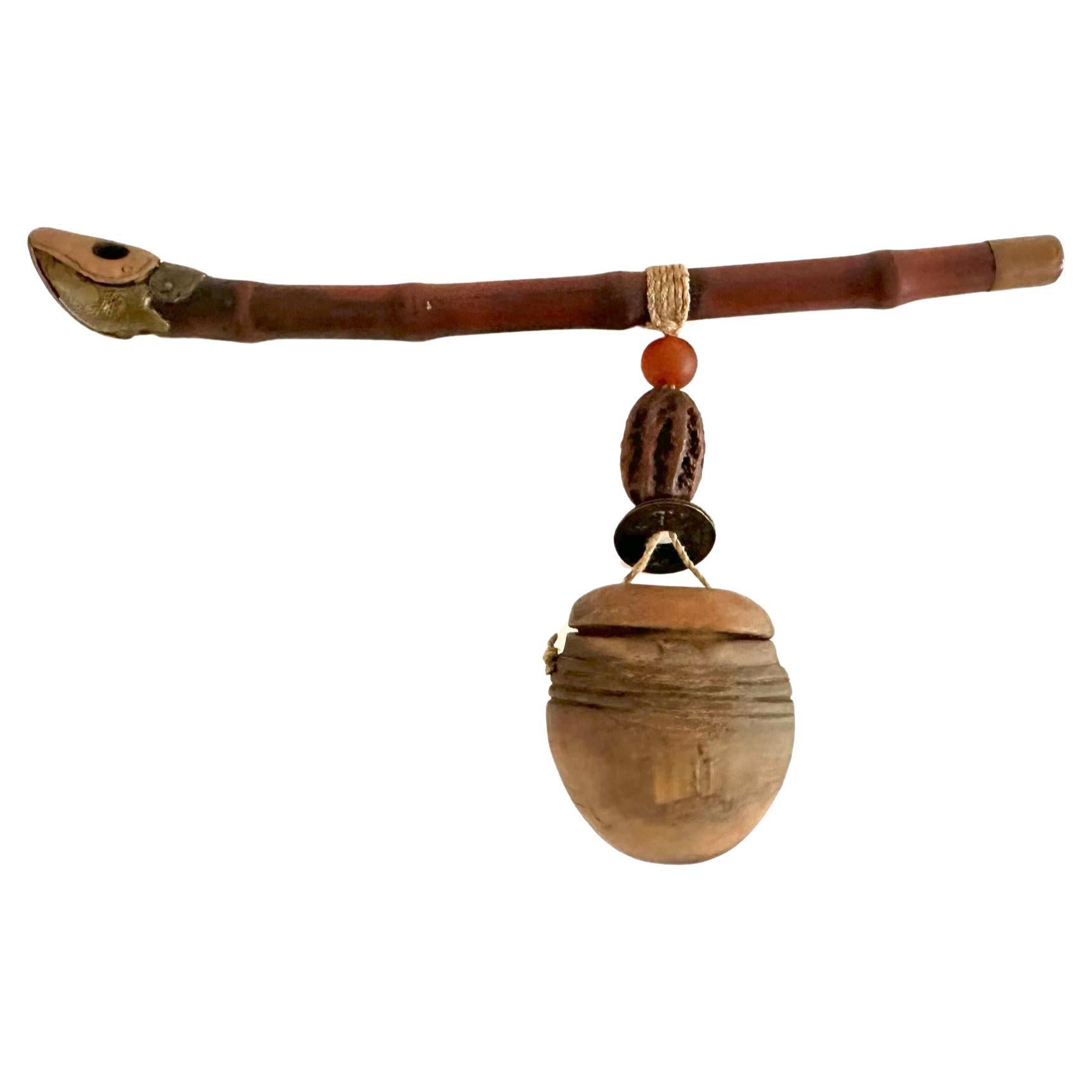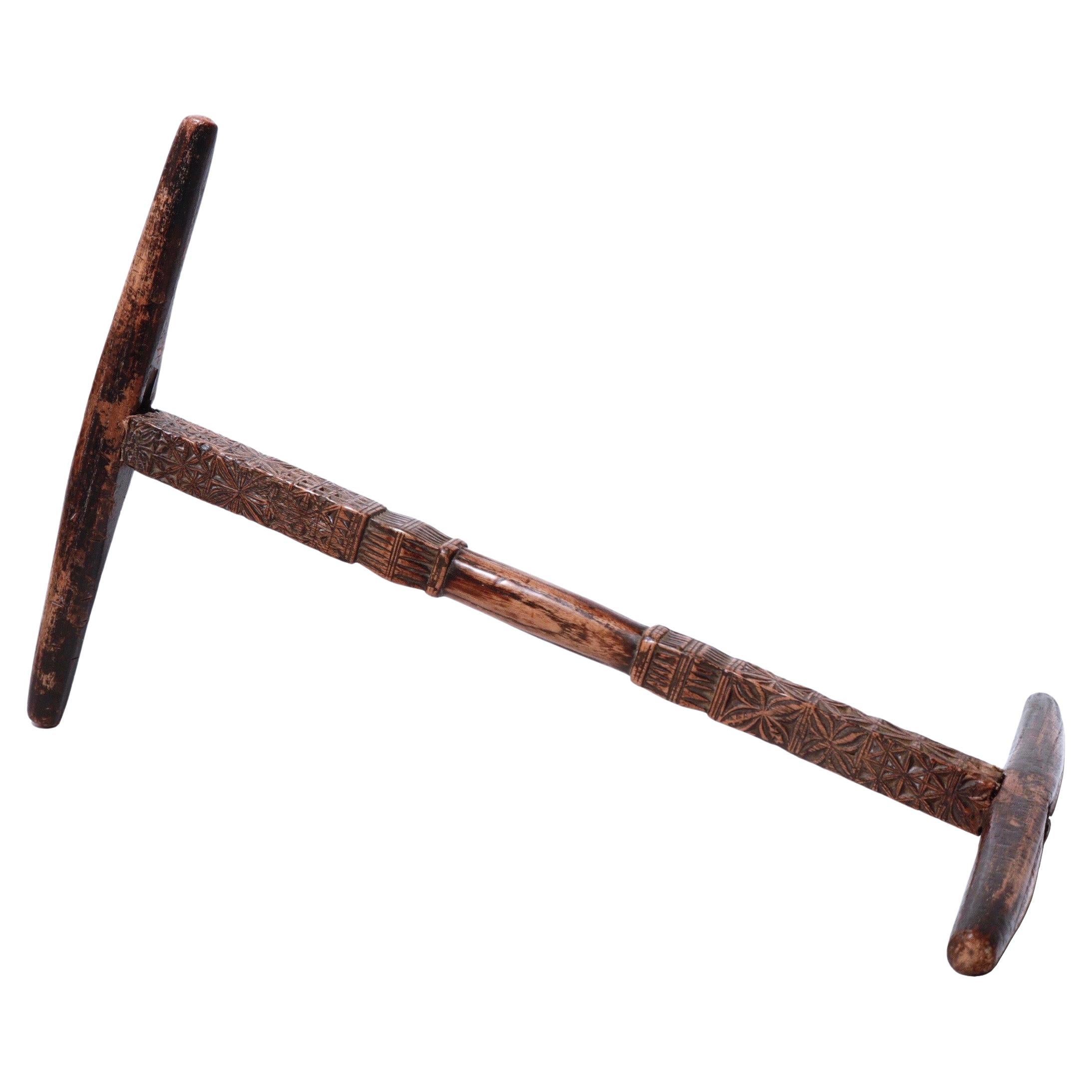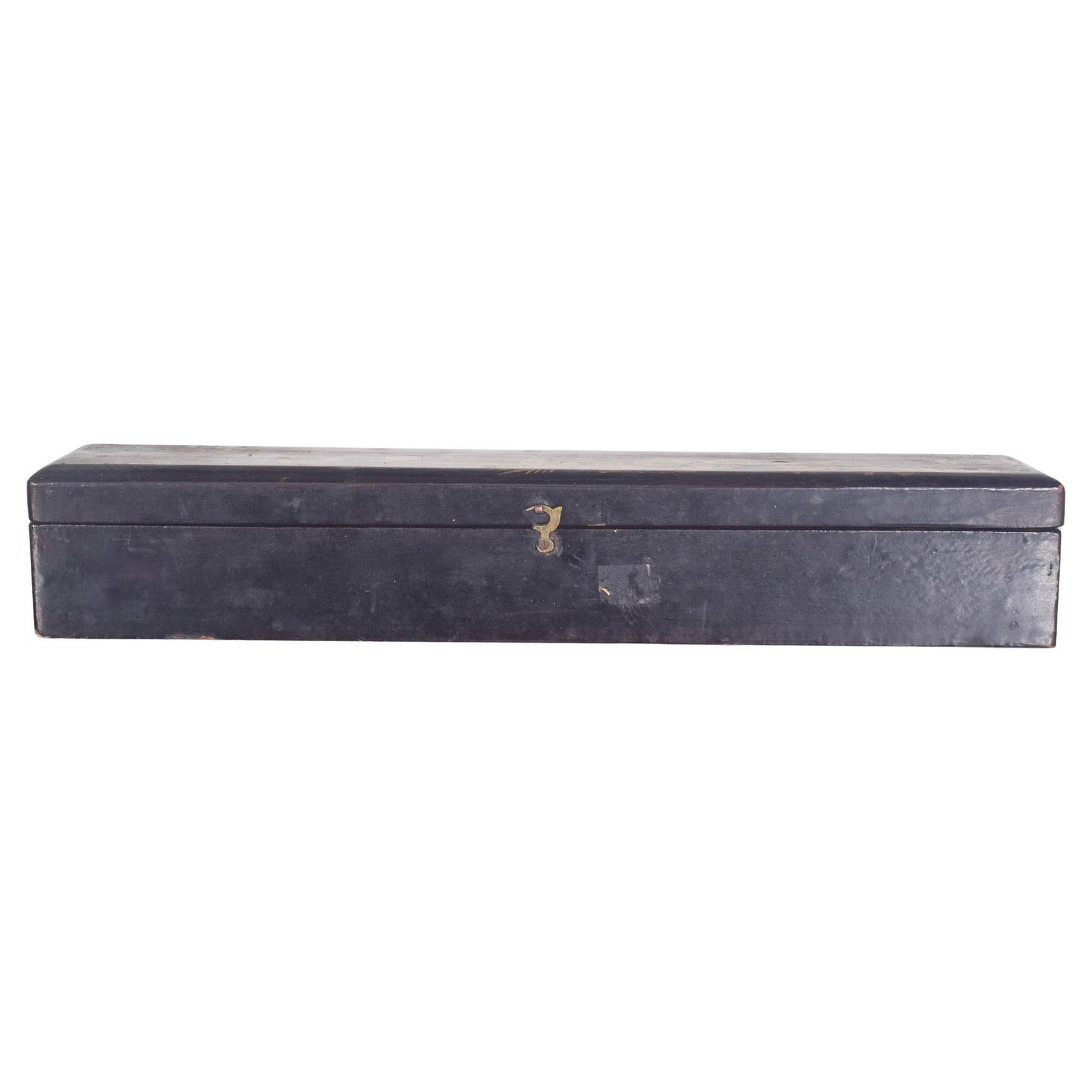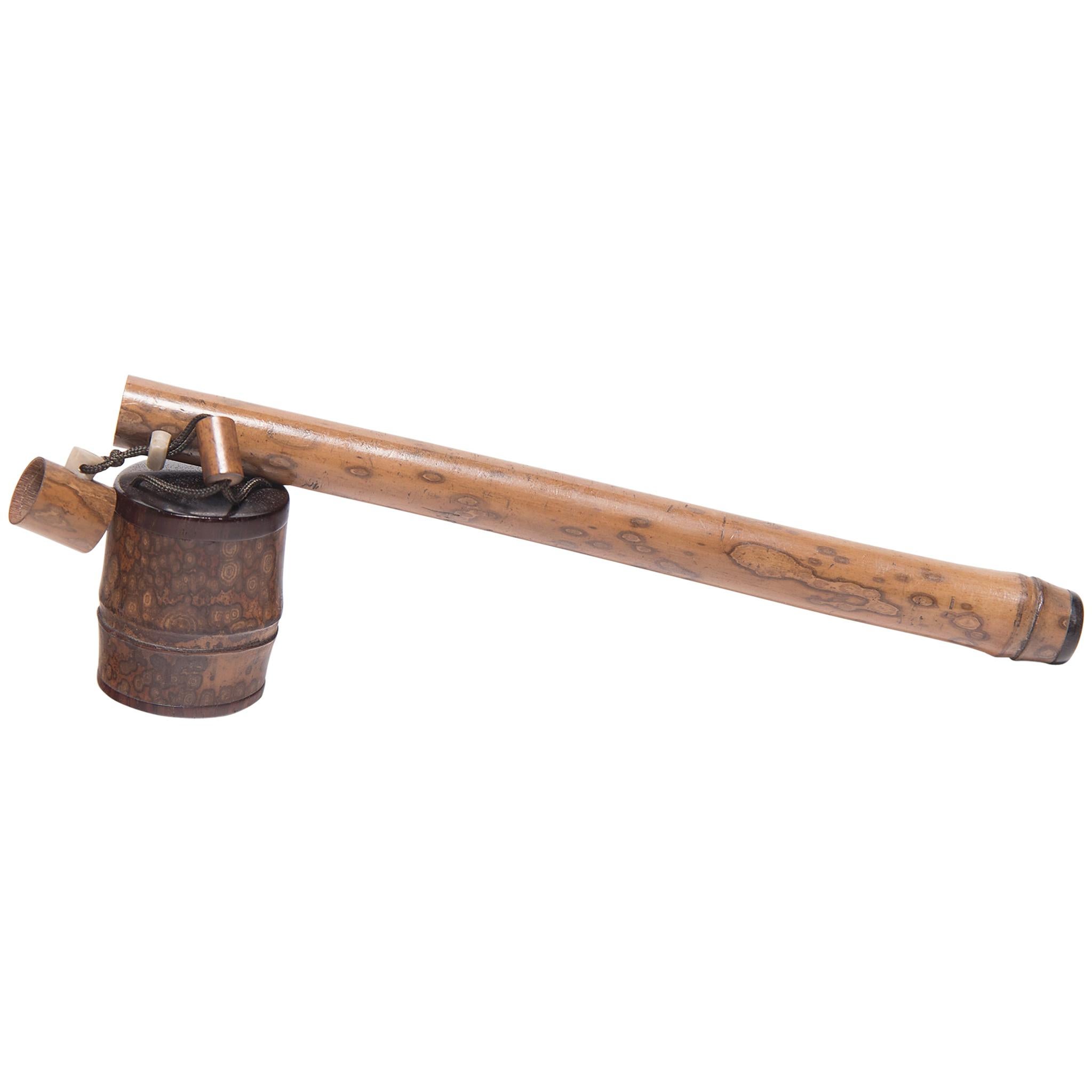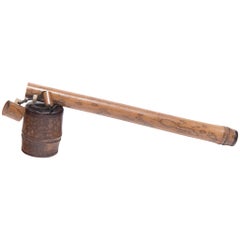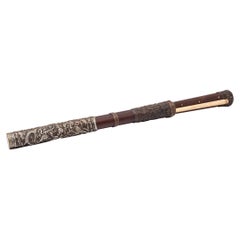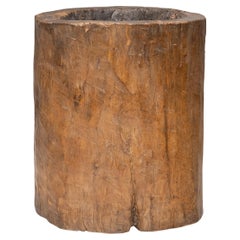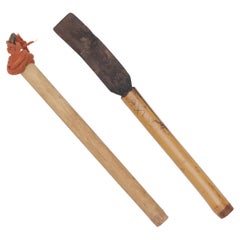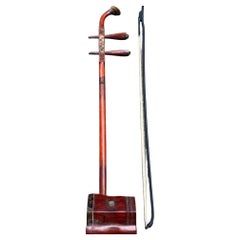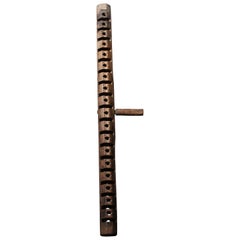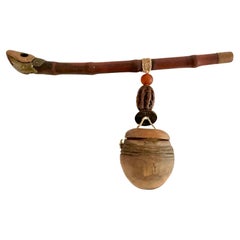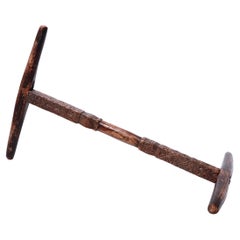Items Similar to Provincial Chinese Wooden Box with Bone Chopstick Handles
Want more images or videos?
Request additional images or videos from the seller
1 of 5
Provincial Chinese Wooden Box with Bone Chopstick Handles
$280
£212.46
€242.93
CA$391.08
A$434.83
CHF 227.05
MX$5,292.97
NOK 2,897
SEK 2,714.35
DKK 1,813
Shipping
Retrieving quote...The 1stDibs Promise:
Authenticity Guarantee,
Money-Back Guarantee,
24-Hour Cancellation
About the Item
A narrow wooden box with a sliding lid and a pair of carved bone chopstick handles with contrasting dark inlay at the ends. The bone handles were likely originally affixed to chopsticks of wood or metal, the latter suggesting they would have been used for moving hot coals in a hibachi or hand-warmer.
- Dimensions:Height: 0.75 in (1.91 cm)Width: 9 in (22.86 cm)Depth: 1 in (2.54 cm)
- Style:Qing (Of the Period)
- Materials and Techniques:
- Place of Origin:
- Period:
- Date of Manufacture:19th Century
- Condition:Wear consistent with age and use.
- Seller Location:Chicago, IL
- Reference Number:Seller: CDKZ049A1stDibs: LU820042396022
About the Seller
5.0
Platinum Seller
Premium sellers with a 4.7+ rating and 24-hour response times
Established in 1997
1stDibs seller since 2006
1,695 sales on 1stDibs
Typical response time: 1 hour
- ShippingRetrieving quote...Shipping from: Chicago, IL
- Return Policy
Authenticity Guarantee
In the unlikely event there’s an issue with an item’s authenticity, contact us within 1 year for a full refund. DetailsMoney-Back Guarantee
If your item is not as described, is damaged in transit, or does not arrive, contact us within 7 days for a full refund. Details24-Hour Cancellation
You have a 24-hour grace period in which to reconsider your purchase, with no questions asked.Vetted Professional Sellers
Our world-class sellers must adhere to strict standards for service and quality, maintaining the integrity of our listings.Price-Match Guarantee
If you find that a seller listed the same item for a lower price elsewhere, we’ll match it.Trusted Global Delivery
Our best-in-class carrier network provides specialized shipping options worldwide, including custom delivery.More From This Seller
View AllJapanese Spotted Bamboo Tobacco Inro, circa 1850
Located in Chicago, IL
Because traditional Japanese kimono didn't include pockets, men and women carried their belongings in small compartments known as inro. Hung from the obi sash belted around the waist and secured by carved netsuke beads, inro were worn as fashionable accessories and often crafted of fine materials.
Paired with a cylindrical case that once held a thin smoking pipe (kiseru), this 19th century inro was likely used for storing shredded tobacco. Both components are carved from spotted bamboo...
Category
Antique Mid-19th Century Japanese Edo Tobacco Accessories
Materials
Bone, Bamboo, Hardwood
Chinese Traveling Chopstick Set with Repoussé Fittings, c. 1850
Located in Chicago, IL
This elegant set of eating utensils dates to the mid-19th century and would have accompanied the well-to-do traveler on a long, cross-country journey. The set originally included a p...
Category
Antique Mid-19th Century Chinese Qing Antiquities
Materials
Metal
Provincial Chinese Trunk Mortar, c. 1900
Located in Chicago, IL
This large wooden mortar dates to the late 19th century and was originally used for crushing rice, grain, spices and other foodstuffs. Carved from a single tree trunk, the mortar has...
Category
Antique Late 19th Century Chinese Primitive Antiquities
Materials
Wood
Pair of Opium Harvesting Tools, c. 1900
Located in Chicago, IL
A pair of early 20th-century tools used for harvesting opium latex from poppy flowers. Formed of bamboo handles and iron blades, the rustic tools were used to scratch the surface of ...
Category
Early 20th Century Chinese Qing More Asian Art, Objects and Furniture
Materials
Metal
$148 / set
Provincial Chinese Trunk Mortar, c. 1900
Located in Chicago, IL
This large wooden mortar dates to the late 19th century and was originally used for crushing rice, grain, spices and other foodstuffs. Carved from a single tree trunk, the mortar has...
Category
Antique Late 19th Century Chinese Rustic Antiquities
Materials
Iron
Chinese Bamboo Opium Pipe with Red Clay Bowl
Located in Chicago, IL
This long bamboo pipe dates to the late 19th century and was originally used for smoking opium. Unlike a tobacco pipe, the opium pipe was designed especially to allow resinous opium ...
Category
Early 20th Century Chinese Qing More Asian Art, Objects and Furniture
Materials
Brass
You May Also Like
Vintage Chinese Wood Er Hu Musical Instrument
Located in 景德镇市, CN
Vintage Chinese Wood Erhu – Traditional Two-Stringed Musical Instrument
This Vintage Chinese Erhu is a beautifully crafted two-stringed bowed instrument, traditionally known as the ...
Category
20th Century Musical Instruments
Materials
Wood
Japanese Antique Wooden Object
Located in Sammu-shi, Chiba
An old tool for making textiles in Japan.
It's a very rare object.
The light and shadow that pass through the even holes are very beautiful.
A nice art ob...
Category
Antique Late 19th Century Asian Meiji Antiquities
Materials
Oak
19th Century Chinese Bamboo Opium Pipe
Located in Atlanta, GA
An opium pipe is a pipe designed specifically for the vaporization and inhalation of opium. But these beautiful little antiques have become one-of-a-kind works of art.
This late 19th...
Category
Antique Late 19th Century Chinese Antiquities
Materials
Brass
Antique Chinese Niddy-Noddy
Located in Point Richmond, CA
Antique Chinese Niddy-Noddy. A wood skein reel, simple three-part construction, composed of a central handle with middle hand grip worn smooth squared ends with relief sectional carv...
Category
Antique 19th Century Chinese Qing Sculptures and Carvings
Materials
Wood
Chinese Fan with Wooden Box
Located in Lisboa, Lisboa
Chinese fan with wooden box. Composed of twenty-two vertical wooden rods, finely crafted in a dark tone and decorated in gold with butterflies, flowers and geometric motifs. Small ci...
Category
Antique Mid-19th Century Chinese Romantic Antiquities
Materials
Fabric, Wood
Antique Asian Bamboo Opium Pipe China Tobacco Accessory Curiosity
Located in Leuven , BE
Old Bamboo Opium Pipe, with visible Knot of the Bamboo. The Mouthpiece and Furnace are in Bronze. The Piece comes from South China.
French Private Collec...
Category
Antique 19th Century Chinese Tobacco Accessories
Materials
Metal
More Ways To Browse
Antique Hand Warmer
Wooden Boxes
Chinese Art Metal
Carved Bone
Antique Wooden Boxes
Bone Handles
Antique Bone Inlay
Asian Handled Box
Antique Bone Handle
Metal Inlay Box
Pair Chinese Boxes
Coal Box
Antique Wooden Box With Handle
Wood Box Metal Handles
Chinese Metal Box
Inlay Wooden Box
Chinese Carved Wood Box
Carved Wood Inlay Box
